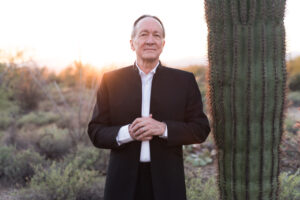As a dentist, I’m often in the situation of explaining the risks and benefits of proposed treatment. It’s a responsibility that I take very seriously. I often wish that I could offer my dear patients treatments that work 100% of the time with zero risk of harm, and it’s interesting to me that many of my patients seem to expect that possibility, especially the younger or less experienced ones. What a relief to interact with the more experienced patients who reassure me, “I know, Doctor, nothing is certain in this world.” And mixed with that relief I see in their eyes the cost of their wisdom and feel that pang of connection.
Sometimes patients complain that their medical doctor has given them a medication that is known to have side effects in some patients. I try to explain that in the medical field, our goal is to exchange Big Risks of Big Problems for Small Risks of Small Problems, but that sometimes the best we can do is to offer a trade of Big Risks of Big Problems for Tiny Risks of Big Problems. The medical world doesn’t have any pill or treatment that works perfectly every time for every person, which is why so much discussion and give and take is needed when working with a medical problem.
Occasionally I get the reward of seeing a great, brave smile on my patient’s face. That’s a thrill. It’s hard for many folks to gather the gumption to go through some of the more involved dental care, and I want to be able to provide inspiration for the benefits without losing sight of the reality of risk. That’s a high goal, and in the last 10 years, I’ve been helped in that goal by my exploration of iamheart.org’s Heart Rhythm Meditation, developed by Puran and Susanna Bair.
I had heard tales of silent Vipanassena retreats lasting between 7 and 30 days, and I didn’t think that was for me. The risk of dissociation seemed too real for me to want to take a chance that might happen to me. But I had always heard people speaking glowingly of the benefits of meditation and I was interested. What a delight to read Puran and Susanna Bair’s first book, ‘Living from the Heart,’ and see that there was a style of embodied, heart-centered, meditation that was aware of the risks and designed their teachings to allow a wide variety of people to experience it safely!
For the first two years, I studied online and in-person with a monthly group and met monthly with my Mentor, who designed practices that were suited to my abilities and tailored to help me meet my everyday concerns. I enjoyed getting to know the other people who attended the monthly meditation and observed them carefully, to see if they were benefitting or weakening from this practice. A group of spiritual seekers is sometimes called a ‘School’ like a school of fish and sometimes called a Caravan. A Caravan is a group of diverse travelers, with diverse destinations and reasons for making the trip who band together led by skilled guides to traverse dangerous and challenging territory. I resonated with this term Caravan, and my observation of the attendees soothed my fears, they seemed to be becoming more balanced and healthy from their practice, handling the normal ups and downs of life in a reasonable fashion that won my admiration and respect.
I read the book, ‘Living from the Heart’ many times. My favorite line was, “If meditation doesn’t make you a better friend, you don’t need it.” I felt encouraged – here was a jewel, a school of meditation that helped one become more engaged with their own life, and the life around them, instead of dissociated. I found that in time, many of the minor irritations of my life, scents, textures, and sounds that used to bother me had become much less irritating. Although this was far from scientific proof, it seemed to indicate to me that Heart Rhythm Meditation was having not just a spiritual and emotional effect, but a physiological effect on me.
After two years of exploration, I nervously attended my first retreat. Thankfully, it was a place of sound – joy, singing, and dancing as well as silence. There was chatting and community as well as deeply peaceful guided meditations with the whole group. I asked Puran if it was very different from the kinds of meditation retreats he experienced while he was learning from his teacher, Pir Vilayat Inayat Khan back in the 1970s. He said that some parts were different and some were the same, but that the thing that touched him the most was seeing people at the retreats smile, make eye contact, and exchange hugs. He pointed out that in those silent early days, people became less and less able to function as human beings in human bodies the more time they spent in meditation trying to escape life. He had become a master at dis-embodied meditation and he credited his wife, Susanna with slowly bringing him around to the idea of developing a school of meditation that was Heart-Centered, and healthy for the human mind and body. I felt so grateful for the years he had put into gathering this experience so that he and Susanna could create this path. “God doesn’t need us to be Angels,” he told me, “God has plenty of Angels, God wants us to be fully human. That’s our goal.”
After 4 years of exhaustive study in HRM, including the 2-year IAMU program, I was ready for a 7-day silent retreat, with Puran as my guide, showing me how to tip-toe up to the edge of surrendering to the experience, and how to use our community as a strong tether to life and to sanity. I got plenty of sleep, nutritious food, and time in nature as well as many hours of meditation. There was an ipod full of sacred music for me to dance to, and a few books of beautiful folk tales. The personal retreat is a process that is taken on with great humility, one on one, in the context of being known by experienced guides, and awareness of the dangers. I was fearful beforehand, but felt much more contentment and self-reliance afterward; it served as an adult rite of passage for me. And although I kept my internet connection off, I did use the record feature on my smartphone.
These thoughts were inspired by reading the article “Lost in Thought – The psychological risks of meditation” by David Kortava in Harper’s Magazine. I felt such sadness for the people involved, and much relief that these rare, but real, risks are being talked about. I had heard of situations in other styles of meditation where people had a very difficult time integrating themselves back into their daily life. Everything in life that has benefit also has risk, but that risk can be mitigated by doing one’s best to find meditation teachers and health care providers who can face that the risks are real, who can teach you to key skills you need to be as safe as possible and who have the skill and ability to minimize the risk as much as possible. In the case of meditation, I believe that one key is ongoing community. In the olden days, only the few who devoted their whole lives were given the secret instructions for meditative practices. I’m glad that more people nowadays have access to the benefits of meditation, and I am glad that there are teachers like Puran and Susanna Bair who are devoted to building skills, practices, and community that make meditation safer for more people.
For more writings about Heart Rhythm Meditation and iamheart.org, and the dangers of meditation see the following link.
Sincerely,
Robin Goldberg DMD
New Haven, CT USA




